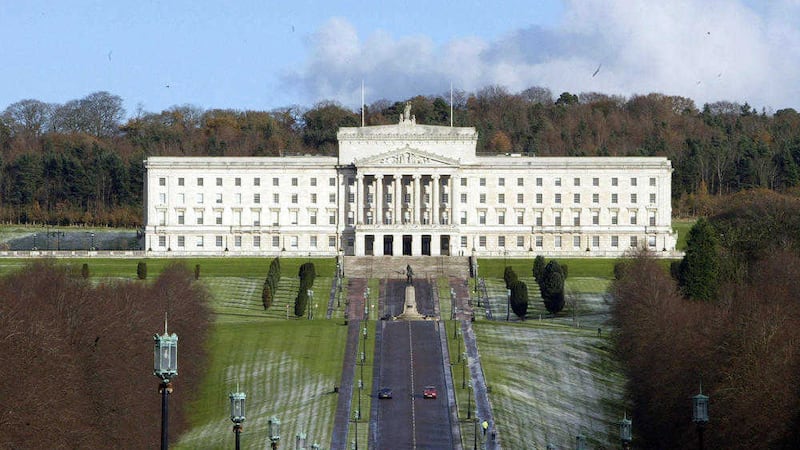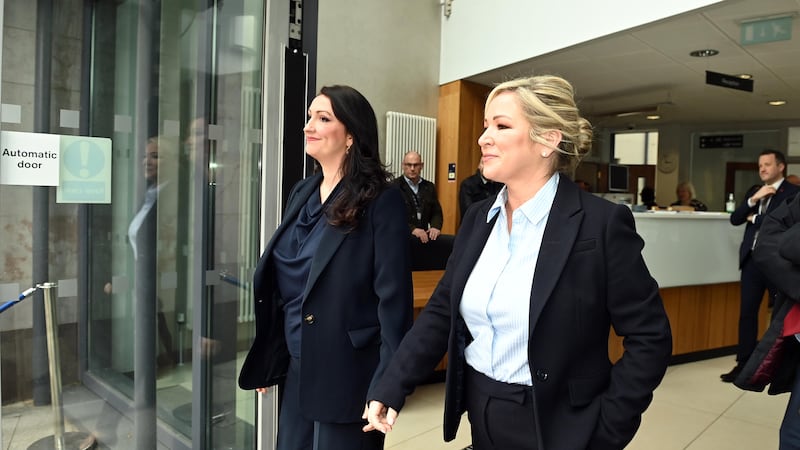THE two main parties at Stormont appear to have moved from coalition to coalescence. The difference is that whereas coalition reflects a short-term political alliance, coalescence suggests a more permanent merging into one unified body.
So where, you ask, is the evidence for such an outrageous suggestion - and, even if it were true, what difference would it make? The evidence lies in the parties' election manifestos, their Programme for Government, the appointment of new ministers and their initial announcements.
The difference it makes is that, despite the parties' carefully managed variances, Stormont has effectively returned to one party government. (Whether you think that is good or bad is up to yourself.)
The likely outcome is that any major challenges to the new administration's policies will arise not from perceived differences between the two parties, but from possible tensions within them.
However, if both leaders maintain party discipline (and they are both good at it) we can expect a period of relatively stable government, particularly with an official opposition to face down.
The first sign of the one-party system emerged when the DUP and Sinn Féin manifestos contained shared ideas and objectives. They both promised to create 50,000 new jobs, to spend an additional £1 billion on health and billions more on infrastructure.
Some similarities were to be expected, since they had jointly planned the draft Programme for Government. However, SF's remarkably brief manifesto was in no way comparable to its impressive Dáil equivalent and was merely a pale reflection of the DUP document.
Ministerial responsibilities also appear to have been agreed before the election. Surprisingly, SF agreed to DUP control of our entire education system, from nursery to post-graduate. It thereby abandoned its responsibility for schools and conceded that universities should be a sub-set of the economy, rather than a branch of education. (As Pearse should have written in "The Murder Machine", who needs history graduates?)
Instead it accepted the health department, by far the most difficult portfolio, and one which will effectively curtail Gerry Adams as he rightly lambasts the huge failings in the south's health system. Sinn Féin gained responsibility for finance, which is not as important as some suggest, because the executive largely determines resource allocation.
The one-party system was reflected in the first announcements from some new ministers. Education minister, Peter Weir, said academic selection should be made easier for children and parents, which suggests that selection is here to stay. The DUP can boast to its electorate, "Look at what we achieved". Sinn Féin can say, "Don't blame us."
One of health minister, Michelle O'Neill's first decisions was to lift the ban on gay men donating blood. Sinn Féin can claim the credit and the DUP can live with it.
New agriculture minister, Michelle McIlveen, is to "consider" a farmers' union proposal to relax pollution regulations, even though Mark H Durkan vetoed such a proposal last year. If the minister changes policy, the DUP can claim the credit among farmers and SF can deny responsibility to environmentalists.
This pre-arranged swopping of social policy flags suggests that we may be witnessing Stormont's first trooping the colour, in which former symbols of policy division are ceremonially exchanged every five years.
(Can you feel a tourist opportunity coming on? You know the sort of thing - the Queen on horseback, marching military bands and each side proudly carrying its flag on education or health back to its regimental headquarters.)
The final piece of the coalescence jigsaw is the seamlessly agreed Programme for Government (PfG), which elevates aspiration above evidence and consequently reads like a badly written prayer. The more religious among you might argue that prayers do not have indicators. Neither does the PfG.
For example, "Improve educational outcomes", is not an indicator, it is an objective (or it could be an instruction). "Improvement in educational outcomes" is an indicator. (When politicians and civil servants cannot distinguish between a noun and a verb, it is not surprising that they regard universities as corner shops for servicing the discredited discipline of economics. That is one reason why they cannot write a coherent PfG.)
So what explains this switch to coalescence? In administrative terms, it offers long-term stability. More importantly, in political terms, it is the safest haven in which both parties can ride out any coming storms including, for example, revelations which might emerge from inquiries into the massacres at Kingsmill and Birmingham.
A standard coalition could struggle to handle such sensitive issues. Coalescence is a safer bet for survival.









